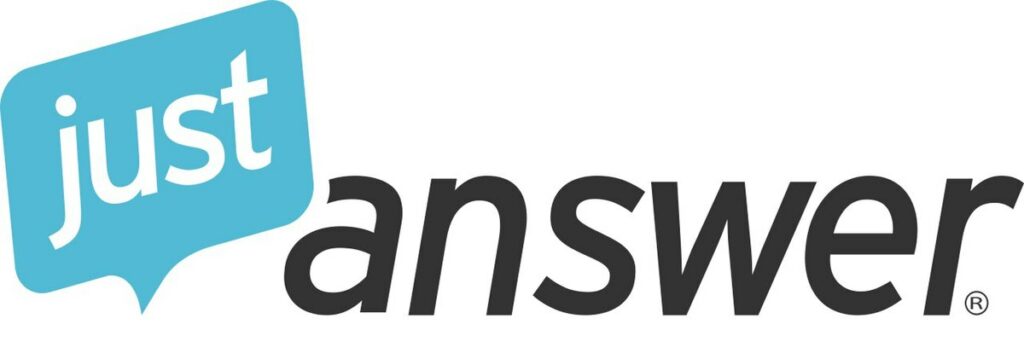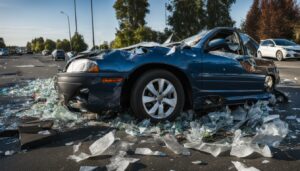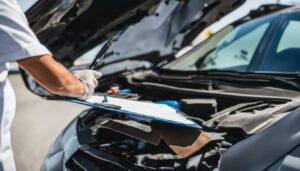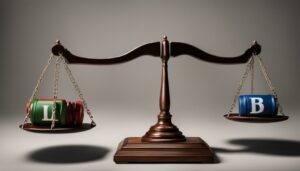Car equipment violations in the USA can have serious consequences for businesses and individuals. These violations occur when equipment is used in a manner that violates safety regulations or standards. Such violations can result in injuries, property damage, or death.
Understanding the legal framework that governs equipment usage is crucial to avoiding violations. The Occupational Safety and Health Administration (OSHA) sets standards for workplace safety, while the Consumer Product Safety Commission (CPSC) regulates consumer products. Violations of these standards can result in hefty fines, legal action, and even criminal charges.
Businesses and individuals must take proactive measures to prevent equipment violations. This includes regular maintenance and inspections, employee training, and proper use of equipment. Failure to do so can result in severe consequences, including legal and financial penalties, damage to reputation, and loss of business.
Key Takeaways
- Equipment violations can have serious consequences for businesses and individuals, including injuries, property damage, and legal action.
- Understanding the legal framework that governs equipment usage is crucial to avoiding violations.
- Proactive measures, such as regular maintenance and inspections, employee training, and proper use of equipment, are essential to preventing equipment violations.
Understanding Equipment Violations
Equipment violations are one of the most common types of traffic violations in the USA. These violations occur when a vehicle or its driver fails to meet certain safety standards. Such violations can range from minor issues like a broken taillight to more serious problems like faulty brakes.
Equipment violations can be detected through routine traffic stops or during roadside inspections. Law enforcement officers are authorized to issue citations to drivers who violate equipment regulations. The fines for these violations can vary depending on the severity of the issue and the state in which the violation occurred.
Some of the most common car equipment violations include:
- Broken headlights or taillights
- Defective brakes
- Worn tires
- Cracked windshields
- Missing mirrors
It is important to note that equipment violations not only put the driver at risk but also endanger other motorists and pedestrians on the road. Therefore, it is essential to ensure that vehicles are in good working condition and meet all safety standards.
In addition to fines, equipment violations can also result in points on a driver’s license, which can lead to license suspension or revocation in some cases. Furthermore, repeated violations can lead to more severe penalties, including impounding of the vehicle.
Related Posts:
Legal Framework
When it comes to equipment violations in the USA, there are both federal and state laws in place to regulate and enforce compliance. These laws exist to protect workers and the public from the harmful effects of equipment violations.
Federal Laws
The federal government has established several laws and regulations related to equipment violations, including the Occupational Safety and Health Act (OSHA), the Clean Air Act, and the Clean Water Act. OSHA is responsible for ensuring that employers provide a safe and healthy workplace for their employees. The Clean Air Act and the Clean Water Act are designed to protect the environment and public health by regulating emissions and discharges from industrial and commercial sources.
In addition to these laws, the Federal Trade Commission (FTC) has recently ramped up its enforcement efforts against illegal repair restrictions that prevent small businesses, workers, consumers, and even government entities from fixing their own products. The FTC’s policy statement is aimed at manufacturers’ practices that make it extremely difficult for purchasers to repair their own products.
State Laws
Each state also has its own set of laws and regulations related to equipment violations. These laws vary widely from state to state, but they generally focus on ensuring that equipment is safe and properly maintained. In some cases, states may have more stringent requirements than federal law.
For example, the state of California has established the California Occupational Safety and Health Act (Cal/OSHA), which is designed to protect workers from workplace hazards. Cal/OSHA has established specific regulations related to equipment safety, including requirements for proper maintenance and inspection of equipment.
Other states may have similar laws and regulations in place, depending on their specific needs and priorities. It is important for employers and workers to be aware of these laws and regulations and to comply with them in order to avoid legal consequences.
In conclusion, equipment violations can have serious consequences for both workers and the public. Federal and state laws exist to regulate and enforce compliance with equipment safety regulations, and it is important for employers and workers to be aware of these laws and regulations and to comply with them in order to avoid legal consequences.
Consequences of Violations
Equipment violations in the USA can lead to severe consequences for companies and individuals. The following sub-sections describe the potential penalties and repercussions that can result from equipment violations.
Financial Penalties
Violations of equipment regulations can result in significant financial penalties. The amount of the penalty can vary depending on the severity of the violation and the governing agency. For example, the Environmental Protection Agency (EPA) can issue fines of up to $25,000 per day for each violation of the Clean Air Act. Similarly, the Occupational Safety and Health Administration (OSHA) can issue fines of up to $13,653 per violation for serious violations and up to $136,532 per violation for willful or repeated violations.
In addition to fines, companies may also face additional costs associated with correcting the violation and ensuring compliance with regulations. These costs can include equipment repairs, legal fees, and increased insurance premiums.
Legal Repercussions
Equipment violations can also result in legal repercussions for companies and individuals. Violations of certain regulations may be considered criminal offenses, resulting in fines and imprisonment. For example, violations of the Export Control Reform Act of 2018 can result in fines of up to $1 million per violation and up to 20 years of imprisonment.
Violations can also lead to civil lawsuits, in which affected parties seek damages for harm caused by the violation. These lawsuits can result in significant financial settlements and damage to a company’s reputation.
Operational Disruptions
Equipment violations can also result in operational disruptions for companies. Violations may lead to equipment shutdowns, halting production and causing delays in delivery of goods or services. In addition, companies may face increased scrutiny from regulatory agencies, leading to additional inspections and audits that can disrupt operations.
Furthermore, companies may be prohibited from participating in certain government contracts or programs if they have a history of equipment violations. This can have a significant impact on a company’s revenue and growth potential.
In summary, equipment violations in the USA can result in significant financial penalties, legal repercussions, and operational disruptions for companies and individuals. It is important for companies to understand and comply with all relevant regulations to avoid these potential consequences.
Prevention Strategies
To prevent equipment violations, companies can implement compliance programs, provide training and education to employees, and prioritize equipment maintenance.
Compliance Programs
Compliance programs are designed to ensure that a company is following all applicable laws and regulations. These programs can help companies identify potential violations and take corrective action before they occur. Companies can create a compliance program by:
- Developing written policies and procedures that outline the company’s expectations for compliance.
- Appointing a compliance officer or team to oversee the program and ensure that all employees are following the policies and procedures.
- Conducting regular audits to identify potential violations and take corrective action.
Training and Education
Providing training and education to employees can help prevent equipment violations by ensuring that they understand the importance of compliance and how to properly use equipment. Companies can provide training and education by:
- Developing training materials that cover topics such as equipment operation, maintenance, and safety.
- Providing hands-on training to ensure that employees understand how to properly use equipment.
- Conducting regular refresher training to ensure that employees stay up-to-date on the latest equipment and safety procedures.
Equipment Maintenance
Proper equipment maintenance is critical to preventing equipment violations. Companies should prioritize equipment maintenance by:
- Developing a maintenance schedule that includes regular inspections and repairs.
- Ensuring that all equipment is properly maintained and repaired by qualified technicians.
- Encouraging employees to report any equipment issues or malfunctions immediately.
By implementing these prevention strategies, companies can reduce the risk of equipment violations and ensure that their employees are working in a safe and compliant environment.
Case Studies
Successful Compliance
The Occupational Safety and Health Administration (OSHA) has strict regulations in place to ensure that companies are maintaining a safe work environment. Failure to comply with these regulations can lead to serious consequences, including hefty fines and even criminal charges. However, some companies have successfully implemented compliance programs to avoid these penalties.
One such example is the construction company, O&G Industries. In 2016, OSHA cited O&G Industries for 119 safety violations and imposed a fine of $1.4 million. However, the company had already implemented a comprehensive safety program that included regular safety training, safety audits, and a safety committee. OSHA recognized these efforts and reduced the fine to $250,000.
Another example is the transportation company, N&D Transportation. In 2018, the Environmental Protection Agency (EPA) cited N&D Transportation for storing hazardous chemicals improperly, which is a violation of the Clean Air Act (CAA) and the Emergency Planning and Community Right-to-Know Act (EPCRA). N&D Transportation had already implemented a compliance program that included regular inspections and employee training. The EPA recognized these efforts and reduced the fine from $177,500 to $60,000.
Violation Examples
Unfortunately, not all companies take compliance seriously, and as a result, they face serious consequences. Here are a few examples of companies that have been cited for equipment violations:
DME Construction Associates: In 2022, OSHA issued a $1.2 million citation to DME Construction Associates for serious and willful violations related to fall protection, scaffolding, and electrical hazards.
Loncin (USA), Inc.: In 2021, the EPA settled with Loncin (USA), Inc. for importing over 7,000 uncertified recreational vehicles into the United States. The company paid a penalty of $240,000.
Keystone Construction and Maintenance Services: In 2010, OSHA cited Keystone Construction and Maintenance Services for 40 safety violations and imposed a fine of $2.4 million. The violations included failing to provide fall protection, electrical hazards, and unsafe scaffolding.
These examples demonstrate the importance of compliance with equipment regulations and the serious consequences that can result from non-compliance. Companies that implement compliance programs can avoid these penalties and ensure a safe work environment for their employees.
Conclusion
Equipment violations can have serious consequences for individuals and companies in the United States. From fines to legal action, equipment violations can result in significant financial and legal penalties.
The consequences of equipment violations can vary depending on the type of violation and the severity of the violation. For example, a minor equipment violation may result in a warning or a small fine, while a more serious violation could result in the suspension or revocation of a company’s operating license.
It is important for individuals and companies to take equipment violations seriously and to take steps to prevent them from occurring. This includes regular inspections of equipment, proper maintenance, and training for employees on how to use equipment safely and correctly.
Frequently Asked Questions
How long does improper equipment stay on your driving record?
The length of time that an improper equipment violation stays on a driving record varies by state. In some states, such as California, the violation remains on the driving record for three years. In others, such as Texas, it stays on the record for two years. It’s important to check with your state’s Department of Motor Vehicles to determine how long the violation will remain on your record.
Is improper equipment considered a misdemeanor offense?
Improper equipment violations are typically considered non-criminal infractions and are not considered misdemeanor offenses. However, if the violation results in an accident or injury, it may be considered a criminal offense.
How often can you be cited for improper equipment violations?
There is no set limit to the number of times a driver can be cited for improper equipment violations. Each violation is treated as a separate offense and can result in fines, points on the driver’s record, and other penalties.
What are the consequences of violating equipment regulations in Ohio?
In Ohio, violating equipment regulations can result in fines and points on the driver’s record. The amount of the fine and the number of points assessed depends on the specific violation. For example, driving with a cracked windshield can result in a $100 fine and two points on the driver’s record.
Do non-moving violations go on your record in Virginia?
Yes, non-moving violations such as improper equipment violations can go on a driver’s record in Virginia. These violations can result in fines and demerit points on the driver’s record. The number of points assessed depends on the specific violation.
What is a non-pointable violation in Indiana?
A non-pointable violation in Indiana is a violation that does not result in points being assessed on a driver’s record. Examples of non-pointable violations include certain equipment violations and violations related to vehicle registration. However, these violations can still result in fines and other penalties.










